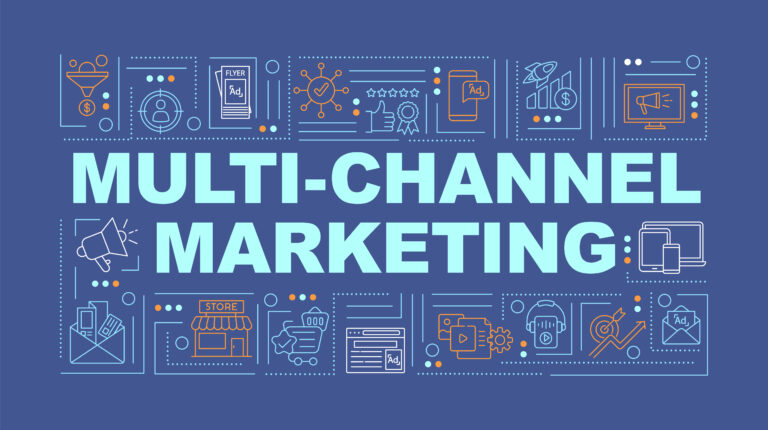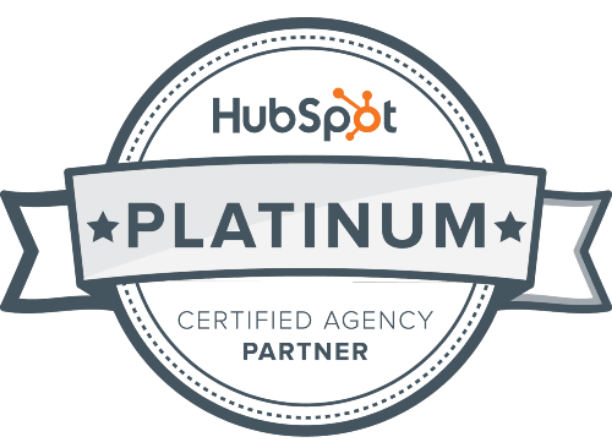Programmatic advertising took its baby steps in the mid-2000s, with real-time bidding (RTB) technology giving advertisers an opportunity to snag web and app ad inventory as it came available, auction-style.
It was more targeted than early ad network buying, with the ability to target users based on things like location, demographics, and user behavior. But it was a far, far stretch from the programmatic advertising capabilities we know now.
Going into 2023, advertisers had their hands on a mind-boggling level of specification and optimization, with user targeting that could laser-focus on your exact audience informed by long-established access to third-party data. Advertisers could pinpoint exactly and scale quickly and report directly on ROI.
The capabilities and flexibility offered by these campaigns pushed programmatic advertising way to the forefront. In 2023, programmatic advertising accounted for 81% of worldwide digital ad spend (and that was only expected to grow).
So, programmatic advertising: an established success with boundless potential. Feel a pregnant “but wait” in the waiting?
Digital Advertising Sees a Sea Change
What a year 2023 was in digital advertising.
Google gave advertisers a good few years’ head start on accepting that the Chrome browser would be ditching third-party cookies—a kind of digital crumb we leave behind online, letting marketers follow a clear browsing trail to deliver us targeted ads. As the calendar flipped to 2024, the cookie deprecation began in earnest.
Chrome restricted third-party cookies for 1% of users starting January 4, 2024. Google’s aim: expanding third-party cookie restrictions to cover 100% of users in the third quarter of 2024.
That cookie-crumbling threw something of a wrench in programmatic targeting. Without detailed user profiles tracked by cookies, advertisers won’t have all that data to go on, making precise ad placement and personalization more demanding.
For businesses marketing online (which is most of us), the changes make digital marketing strategy shifts a must.
That’s all before we even get into how
AI is revolutionizing digital marketing.
Artificial Intelligence ushered in a complete digital advertising phase change, melting the solid state of static ads into a fluid that takes the shape of its container and finds and seeps into any available crack. AI growth got supercharged in 2023, and so did the changes in online advertising.
With campaign types like Google’s Performance Max, advertisers can now deliver hyper-personalized creative automatically, with visuals and messages getting tailored to individual users in real-time, right where they are and exactly how they prefer.
AI algorithms continue to learn and grow at max speed, so more change is inevitable—count on the adaptable liquid sublimating into a generative gas, filling every available ad space on its own. Picture banners adapting to your changing mood, video scripts crafting personalized narratives, and entire “made-for-ad” websites springing up, all generated by AI algorithms.
It’s all happening, and it’s as challenging as it is fascinating.
Marketers and advertisers are walking into an uncertain future. It’ll likely contain a wave of low-quality AI ad inventory, and it’s already butting up against the ethical boundaries between creativity and manipulation.
So, how do you navigate and make the most of programmatic advertising while the script is flipping? Here’s what to know.
What is Programmatic Advertising?
Picture something like a digital version of the stock-market floor. Billions of ad impressions flicker across screens while advertisers scream bids in hyperspeed, their calculations based on complex algorithms and audience data. The intent: placing ads precisely where their ideal customers are, as many times as possible for as little cost as possible.
Programmatic advertising is a little like that, just on laptops, most of the screaming done automatically (with strong strategic direction built in ahead of time).
We don’t haggle with individual publishers or rely on broad, untargeted campaigns. Programmatic advertising automates the process, using data-driven insights and advanced algorithms to:
- Target your audience based on your precise specifications
- Optimize your campaigns in real time, adjusting bids, budget allocations, and creative variations based on performance data
- Maximize your advertising budget, eliminating wasted impressions on irrelevant audiences
- Deliver key data and insights, tracking campaign performance and giving you access to all that information.
It’s a powerful digital advertising discipline, and done right, programmatic advertising delivers results. The key is understanding the intricacies, following the changes, and knowing intimately what “doing it right” means.
The Evolution of Programmatic Advertising
How did this much growth happen in just 20 years? Internet years sure are like dog years.
A few milestones in programmatic advertising’s story:
- Early on, Real-Time Bidding (RTB) brought automation and dynamic pricing in to revolutionize online ads, giving advertisers the chance to compete for space based on the potential value of ad impressions.
- By the mid-2010s, programmatic advertising’s reach had grown by leaps, from traditional websites into social media, connected TV (CTV), in-game advertising, and beyond.
- Nearing 2020, renewed focus on privacy and data security ushered in a different shift, with regulations like GDPR and CCPA demanding transparency and user control over data usage.
The Future of Programmatic Advertising
As we roll into a cookie-less future, programmatic advertising is still full of change, but opportunity and possibility too.
What we expect to see in the immediate future:
Video stays at center stage.
Video only continued to grow as a powerful marketing tool in 2023, and every sign points to video as a preferred asset for programmatic ads. In Wyzowl’s Video Marketing Statistics 2024 survey, 82% of consumers said a video convinced them to buy a product or service, and 89% said they want to see more videos from brands. It’s hard to argue with that data.
Contextual Targeting Rises.
With cookies out of our diet, contextual targeting based on website content and user behavior becomes the key, creating a more privacy-focused and relevant advertising experience for users.
AI and machine learning make it personal.
Advanced AI algorithms will take optimization and personalization even further, tailoring ad experiences to individual users with uncanny precision—so smart marketers will have to learn how to leverage the capabilities properly.
Integration across all channels, all the time.
Omnichannel marketing means a seamless flow, from websites and apps to smart speakers and CTV. The benefits are huge, not just for performance marketing but for overall brand building. With smart omnichannel marketing strategies, businesses will deliver a cohesive experience across users’ entire digital journey, making the brand’s personality clear and benefits obvious.
Native advertising goes mainstream.
Think sponsored articles, in-feed posts, and product recommendations that look like organic content. Programmatic native ads give marketers a powerful blend of benefits: a less intrusive, more engaging user experience and broader opportunities to build partnerships and stretch your creative legs.
Programmatic Ad Opportunities and Challenges for Small Businesses
Small businesses can get a lot out of investing in programmatic advertising, even as the landscape grows more complex and demands broader expertise.
Open Opportunities
You can access engaged audiences that were traditionally inaccessible through direct buys, leveling the playing field against larger competitors with deeper pockets. That can include TV viewers that used to be unreachable, budget-wise, to so many businesses. Programmatic CTV placements put cord-cutters and streaming enthusiasts within your grasp.
You can maximize your advertising budget, precisely targeting relevant audiences and optimizing ad campaigns for conversions.
And you can learn about your audience, pulling detailed, data-driven insights that can inform both your broader marketing strategy and ongoing product development.
Complex Challenges
Navigating the programmatic ad ecosystem can be a lift—the intricate tech stack and diverse, ever-changing platforms may feel daunting for marketers who don’t make their full-time home in digital advertising.
Many small businesses struggle with developing and maintaining the necessary volume of in-house data and expertise for optimal campaign setup and ongoing optimization, too.
Conquering the Challenges of Programmatic Advertising
The challenges and complexities of programmatic advertising are real, but the benefits are too. And all signs are pointing toward programmatic ads taking an even bigger share of our marketing budgets and attention going forward, so it’s worth taking steps to invest and grow.
Steps that can set you up for programmatic advertising success:
Embrace the idea of continuous learning.
Get your staff trained on programmatic ad fundamentals, data analysis, and campaign management. Attend industry events, webinars, and workshops to stay updated on the latest trends and best practices in programmatic advertising.
Invest in data.
You can start informing your targeting and personalize campaigns by leveraging your existing customer data—from website visits, email engagement, and CRM systems. A cookieless future means putting emphasis on growing that first-party data.
Emphasize email list growth and top-of-funnel marketing campaigns to build on what you have. Collaborate with data providers or agencies to access high-quality audience segments and enhance your targeting capabilities.
Then continuously monitor campaign performance, analyze data insights, and make data-driven adjustments to optimize your spend, targeting, and messaging.
Start small and scale strategically.
Digital advertising runs on testing and learning. Kick off with smaller, targeted campaigns to test and learn, and grow as you go.
Keep your focus on the long term as you ramp up. Immediate clicks and impressions are great, but your programmatic strategy should feed into your overall marketing objectives and brand awareness goals.
Find the right partner
If it’s not realistic to own programmatic advertising in-house—from strategy to execution—that shouldn’t mean leaving the benefits on the table. Find a trusted creative agency that can manage programmatic advertising and help educate your team on an ongoing basis, too, so everyone’s aligned with how and why to make the most out of these tools and tactics.
If you’re looking for a partner agency that specializes in programmatic advertising (and all things digital marketing), contact Snapshot.
We manage digital advertising for a broad range of brands big and small, and we’re a full-service marketing agency, so we handle every need, from strategy to graphic design, video production, copywriting, campaign management and optimization.
Take a look at some of our work in Snapshot’s portfolio, and let’s talk about how we can help you reach your digital marketing goals.








